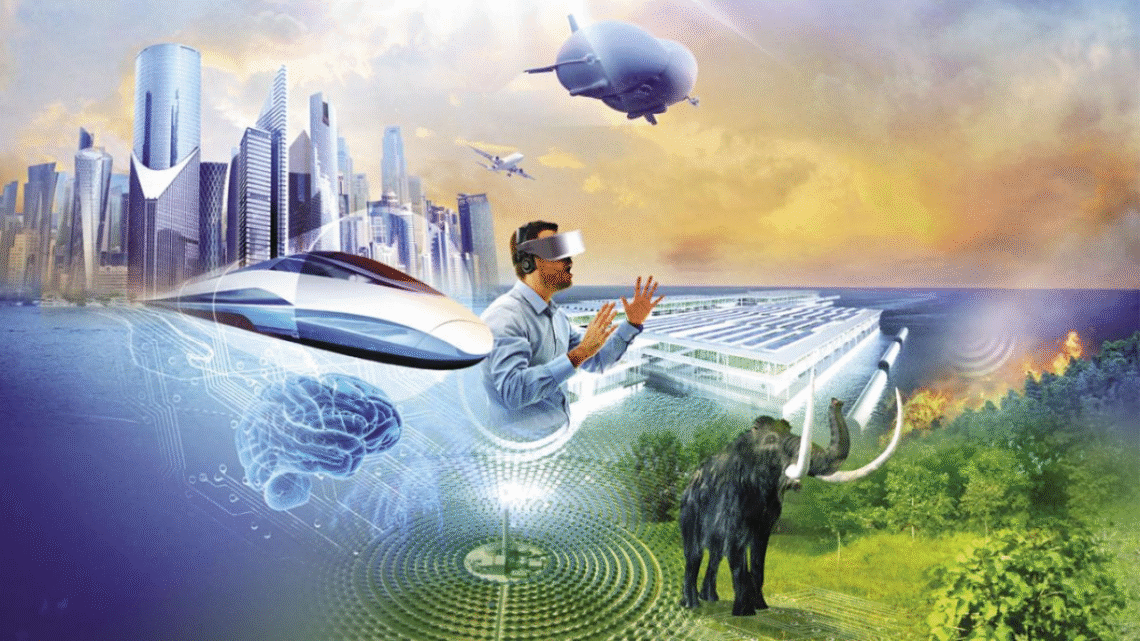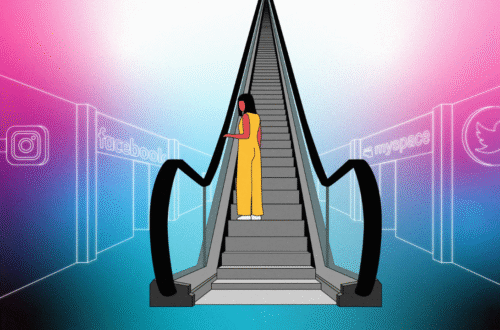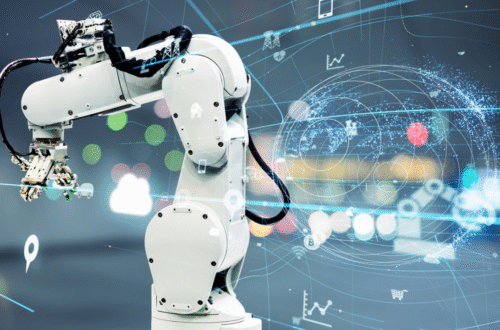The future is not coming — it is already being built, one invention at a time. Every few decades, certain technologies emerge that completely redefine the way we live, work, communicate, and think. From electricity to the internet, history shows us that innovation is a powerful force for transformation. Now, as we look ahead, we stand on the edge of yet another wave of breakthroughs — ones that promise to change the world once again.
In this article, we explore the top 10 future technologies that could shape everything from health care and transportation to energy and communication. These are not just science fiction ideas or distant dreams. Many are already in development and could become mainstream within the next 10 to 20 years.
1. Artificial Intelligence (AI) and Machine Learning
Artificial intelligence is already playing a major role in our lives — powering digital assistants, personalizing recommendations, and even helping doctors diagnose diseases. But what lies ahead is even more profound.
Future AI will be capable of understanding context, emotion, and nuance. It will be able to perform complex tasks, collaborate with humans, and make autonomous decisions. From self-driving vehicles and automated customer service to AI-powered legal research and medical imaging, AI could touch every corner of human activity.
Its potential to increase productivity, solve problems, and reduce errors is enormous. However, it will also raise serious questions about ethics, privacy, and the role of human judgment.
2. Quantum Computing
Traditional computers use bits — ones and zeros — to perform operations. Quantum computers use qubits, which can represent multiple states at once. This allows them to process information in ways that are impossible for classical computers.
Quantum computing could revolutionize fields like cryptography, drug discovery, materials science, and complex simulations. Problems that would take current supercomputers thousands of years to solve could be handled in minutes.
Although quantum computers are still in their early stages, tech giants like IBM, Google, and startups around the world are racing to make them commercially viable.
3. Brain-Computer Interfaces (BCIs)
Imagine being able to control devices with your thoughts, communicate without speaking, or even restore movement to paralyzed limbs. These are the goals of brain-computer interfaces, or BCIs.
Companies like Neuralink and other neurotech labs are already working on devices that connect the human brain directly to computers. In the future, BCIs could help treat neurological disorders, enable new forms of communication, and perhaps even allow humans to merge more deeply with artificial intelligence.
The idea sounds futuristic, but early prototypes already exist and are being tested in real-world settings.
4. Biotechnology and Genetic Engineering
Biotech is poised to redefine what it means to be human. Thanks to technologies like CRISPR-Cas9, scientists can now edit genes with unprecedented precision. This opens up the possibility of curing genetic diseases, improving immunity, and even designing custom traits.
Beyond medicine, genetic engineering could transform agriculture, helping to create crops that resist pests, grow in extreme conditions, or offer higher nutrition.
As with all powerful tools, ethical questions will be central to how this technology is used — particularly around human enhancement and genetic privacy.
5. 5G and Beyond: The Future of Connectivity
The rollout of 5G networks is already enhancing our internet speeds and reducing latency. But what comes next — 6G and beyond — could be even more transformative.
Ultra-fast and ultra-reliable wireless connectivity will power the Internet of Things (IoT), autonomous vehicles, smart cities, and remote surgeries. It will make real-time communication seamless and support technologies that rely on large-scale data sharing and processing.
As connectivity improves, access to education, health care, and economic opportunities could expand across the globe.
6. Augmented Reality (AR) and Virtual Reality (VR)
AR and VR are no longer limited to gaming. These immersive technologies are being used in education, job training, architecture, retail, and even therapy.
In the future, AR glasses could overlay digital information onto the real world, guiding you through tasks, offering translations, or displaying real-time data. VR could allow students to explore ancient civilizations or simulate dangerous environments for training.
As hardware becomes more comfortable and affordable, AR and VR will become everyday tools rather than niche gadgets.
7. Clean and Renewable Energy Innovations
With climate change becoming more urgent, the search for sustainable energy solutions is accelerating. Future technologies aim not only to replace fossil fuels but also to make energy production cleaner, smarter, and more efficient.
From fusion energy, which mimics the sun’s power, to advanced solar panels, wind turbines, and energy storage systems, the next wave of clean energy tech could reduce pollution, lower costs, and ensure energy access for all.
Grid decentralization and smart energy management systems will also play a key role in reshaping how energy is distributed and consumed.
8. Space Technology and Colonization
Private companies like SpaceX, Blue Origin, and national space agencies are setting their sights far beyond Earth. The next decades may see permanent human settlements on the Moon or Mars, space tourism for civilians, and the mining of asteroids for rare resources.
Satellite constellations are already improving global internet access and monitoring climate change. In the future, space-based solar power, advanced propulsion systems, and space manufacturing could become new frontiers of economic growth.
Space technology is no longer about exploration alone — it’s about creating a new domain for life and industry.
9. Nanotechnology
Nanotechnology involves manipulating matter at the molecular or atomic level. It has the potential to transform materials, medicine, electronics, and even food.
Imagine clothing that cleans itself, materials that repair their own cracks, or medicine that targets cancer cells with pinpoint accuracy. These are just some of the applications of nanotech.
In electronics, nanoscale components are helping to make devices smaller, faster, and more energy-efficient. In health care, nanoparticles can be used for early disease detection and drug delivery.
As the field matures, it will bring about innovations that seem like science fiction today.
10. Autonomous and Electric Transportation
The future of transportation is electric, autonomous, and smart. Self-driving cars are already being tested on roads around the world. Electric vehicles (EVs) are rapidly replacing traditional combustion engines.
In the coming years, we can expect advances in vehicle-to-vehicle communication, AI-powered traffic systems, flying taxis, and even hyperloop trains that travel at incredible speeds using magnetic levitation.
These innovations could make transportation safer, cleaner, and more efficient — reducing congestion, emissions, and travel time.
Conclusion
The technologies listed here are not just tools — they are catalysts for change. They have the power to improve health, increase knowledge, connect people, protect the planet, and even redefine what it means to be human.
But with great power comes great responsibility. Each innovation brings with it challenges around ethics, equity, security, and access. The future we build will depend not only on what we create, but how we choose to use it.Tech is future — and the future is closer than we think. The question is, are we ready?





